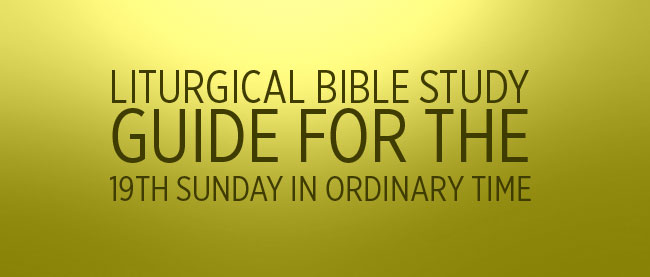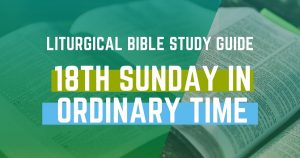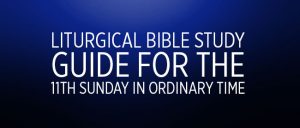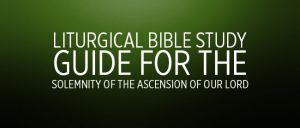1st Reading – Wisdom 18:6-9
The Book of Wisdom, also known as the Wisdom of Solomon, is listed in the Muratorian Fragment [the oldest (second century) listing of writings approved as Scripture for use in the Church of Rome] as a New Testament book. The book is not in the Hebrew canon and it is certain that Greek was the original language. It was certainly written after the completion of the Septuagint (middle of the 2nd century B.C.) and earlier than the New Testament. It is thought to date from the middle of the first century B.C. which would make it the last of the Old Testament books to be written. Believed to have been composed in Alexandria, Egypt, the author certainly isn’t Solomon and his identity remains unknown. All efforts to identify the author have been futile and the most that can be said is that he was a devout, Greek speaking Jew, acquainted to some extent with Greek philosophy and culture.
The book divides into two parts: The first part (1:1 through 11:1) appears to be a public address which sings the praises of Wisdom. The second part (11:2 through the end) is a midrash (a Jewish method of searching the Scriptures with a view to discovering the deeper meaning held to underlie the most minute details contained in the sacred text) in homily form about God’s fidelity to His people in the exodus. Today’s reading concerns the tenth plague and the exodus by which God punished the Egyptians and glorified Israel.
2nd Reading – Hebrews 11:1-2, 8-19
Today we begin a study of the Book of Hebrews. The last time we studied Hebrews in any depth was the 27th through 33rd Sundays in Ordinary Time in Cycle B. Today we take up our study essentially where we left off at that time.
The epistles are arranged in the Bible first by author, and then in order of descending length. Hebrews appears after the letters of Paul and before the Epistle of James. This is because although early tradition, in the main, attributed this text to Saint Paul, the western church did not accept Pauline authorship until the 4th century. The letter’s canonicity is not in doubt; it was included in the canon by the Council of Trent (April 8, 1546) among the other writings of Saint Paul, although the council chose not to state categorically that it was written by Paul. (Note how the letter is announced for the Mass reading “A reading from the letter to the Hebrews”). At any rate, who wrote it is a secondary question which has nothing to do with matters of faith.
The letter was probably written in Italy after A.D. 63 and before A.D. 70 (somewhere around A.D. 67 would be a good guess). It was obviously written to people whom the author knew to be steeped in the Old Testament, people who in all probability were converts from Judaism, and who may previously have even been priests or Levites. After becoming Christians, because of the difficult circumstances of the time, they had to abandon Jerusalem, the holy city, to seek refuge elsewhere; possibly Caesarea or Antioch. In their exile they look back with nostalgia on the splendor of the cult they played a part in prior to their conversion. They feel deceived and are tempted to give up their new faith, in which they are not yet well grounded. In addition to this they are discontented by the persecution they suffer because of their faith. Obviously, they are in need of help and in particular of clear doctrine to bolster their faith and enable them to cope with temptation to infidelity.
As we learned last year in our study of the letter to the Hebrews, the basic teaching centers on showing the superiority of the Christian religion over Judaism. The arrangement is developed in three stages:
- Jesus Christ, the Incarnate Son of God, the King of the universe “reflects the glory of God and bears the very stamp of his nature” and is superior to the angels.
- Christ is also superior to Moses “as the builder of a house has more honor than the house.”
- Jesus, the Son of God, is the greatest high priest who has passed through the heavens; His priesthood is of the order of Melchizadek, superior to the priesthood of Aaron, from which the Levitical priesthood derived.
Theological faith is closely linked to hope. Today, with this lesson in mind, we hear of the faith of Abraham.
Gospel – Luke 12:32-48
Jesus, having told the disciples of the external problems they will encounter such as that of the Pharisees, whose leven is hypocrisy, now tells them of internal problems caused by selfish Church officials.





